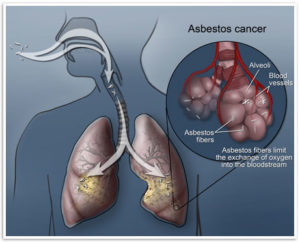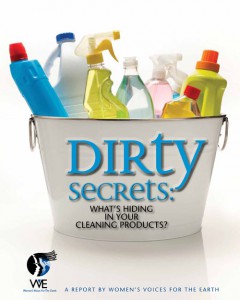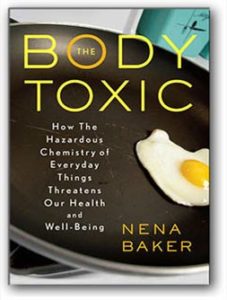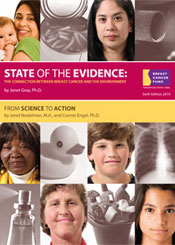“Look both ways before you cross the street.” That’s the Precautionary Principle in a nutshell.
The Precautionary Principle was hammered out at the historic Wisconsin Wingspread conference in 1998 by scientists, researchers, and citizens. The principle is grounded in the simple belief that we should not wait to protect ourselves or the environment until we have absolute proof that certain products or activities can cause us harm.
To the contrary, the principle declares: “When an activity raises threats of harm to human health or the environment, precautionary measures should be taken, even if some cause-and-effect relationships are not fully established scientifically.”
Industries use scientific uncertainty as a way to avoid cleaning up their act. Companies often magnify the importance of uncertainty to persuade citizens, legislators, and regulators that they, too, should delay action. Think how much farther along we’d be at solving the climate change crisis if the energy industry hadn’t fought every proposed carbon dioxide regulation with the cry, “There’s not enough proof that CO2 causes global warming!”
At the same time, budget crunches and competing priorities mean that important studies that could document environmental impacts often are shunted aside. Ironically, the longer we wait to address a problem, the greater the costs become – to the environment, to our health, and to the economy.
The Precautionary Principle has four tenets.
1) We — consumers, governments, manufacturers — have a duty to respond to early warnings. We must act before harm occurs, not after the fact. We don’t wait for our child to get hit by a car to tell her to look both ways when crossing the street. People shouldn’t need to contract cancer or asthma to get access to safe ingredients, or for companies to remove products like Bisphenol-A from baby bottles or control the air pollution coming out of cars.
2) Consumers should not bear the “burden of proof.” Under our current system, you and I and, essentially, our environment, have to prove that we’ve been harmed before the government is willing to intercede on our behalf and before industry is willing to change the way it does business. Under the Precautionary Principle, manufacturers would need to demonstrate safety.
Can this approach work for industry? It’s taken hold in Europe. Starting with chemicals already known to cause cancer and birth defects, cosmetics companies are being required to reformulate their products to contain safer ingredients. Here in the U.S., the nonprofit Campaign for Safe Cosmetics is urging manufacturers to follow suit. Putting the burden of proof not on you and me but on producers should become the law of the land.
3) It is our responsibility to explore alternatives to toxic substances and activities. What good does it do us to know, or even suspect, something will harm us if we don’t choose a safer alternative? Increasingly, we have real choice in the marketplace: more organic foods, more fuel-efficient vehicles, more recycled products, less plastic, less stuff overall. When we opt for the most environmenally friendly products and services available, we provide powerful incentives to manufacturers to shape up..
4) The Precautionary Principle requires democratic participation. Companies should not be allowed to decide our fate in their corporate board rooms. It’s up to us to provide guidance as well as accountability by participating in public hearings, writing letters to companies, voting on ballot initiatives, electing responsive public officials, and, of course, using our Big Green Purse in the marketplace to favor products that offer us the healthiest, safest options.
In fact, often, our first line of defense is the way we spend our money — or choose to keep it in our pockets. If you’re stymied by all the confusing green labels, start with products that meet independent standards for health and environmental sustainability. For suggestions of products to avoid and choices to make, read this month’s Green Mom’s Carnival on the relationship between the environment and cancer, hosted by Tiffany at NatureMoms.

















6 thoughts on “We Don’t Wait for Our Child to Get Hit By a Car Before We Tell Her to Look Both Ways When Crossing the Street”
Thank you, yes! I would love to see the precautionary principle used rather than requiring proof of harm. It’s insane doing things the other way.
Diane, you first introduced me to the Precautionary Principle through your great book and later through the interview you granted OrganicMania. This is a great reminder, and I loved how you worked in REACH. Yes, yes, yes, we need to be cautious.
Thanks, Lynn. Thanks, Stephanie.
Love this post — I so wish this was a mandatory conversation in school, at PTA meetings and other community organizations
this struck me most –Industries use scientific uncertainty as a way to avoid cleaning up their act.
I would love to see accountability from these industries not only to clean up their act but also to pay for the harm they cause
interesting twist if these companies were actually liable …
when organics came to main stream i wanted whole heartedly to support their efforts! Just made sense to me
I remember how shocked I was to learn that we DON’T use the precautionary principle. This is our health, and our children’s health, that we are playing with. We can’t afford to be flippant and delay action.
I like to think that every time I buy something I’m voting with my dollars. I can vote for sustainability, or my local community, or good business practices. We hold the power in our hands, and if enough of us use it, then change will follow. It gives me hope when faced with such enormous problems.
Great comments, everyone. Yes, we risk so much so needlessly every day. As individuals working in our communities, we can change that – by personal example, by using our spending power, and by “talking the talk” over and over again!
Comments are closed.